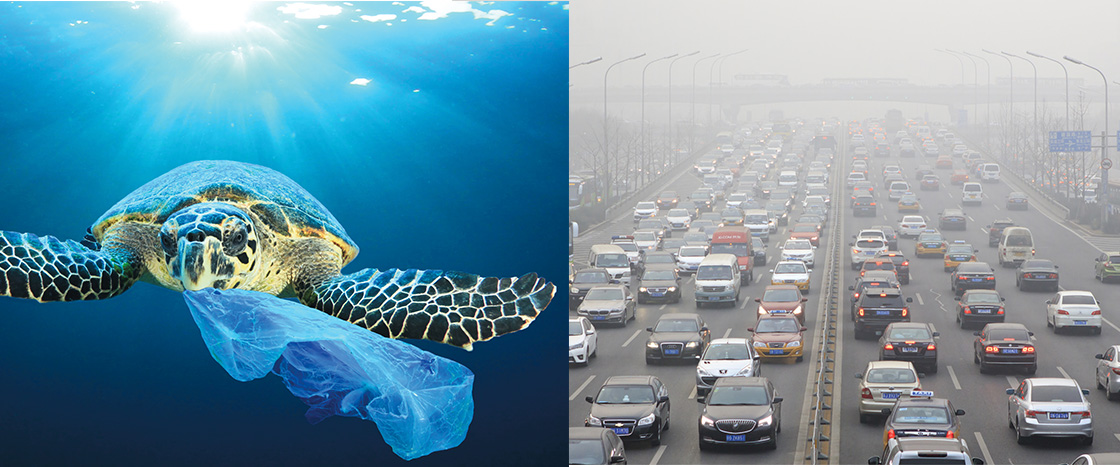Waterways clogged by plastic garbage. Skies filled with thick smoke and harmful gases. Unfortunately, both water and air pollution affect living things everywhere. What if you could fix one for good, with a snap of your fingers? Which problem would you choose to solve?

Would You Rather Banish Ocean Trash or Zap Dirty Air?
If you could fix either water or air pollution with a snap of your fingers, which would you choose?
Learning Objective: Students will gather and use information about ocean trash and dirty air to support an argument.
Standards
OCEAN TRASH
Shutterstock.com
Plastic trash that washes up onshore can be pulled back out to sea by tides.
What are we doing to help?
SolStock/Getty Images
In the U.S., a law called the Marine Protection, Research, and Sanctuaries Act limits the amount of trash that can be dumped near waterways. Around the world, many organizations are working to reduce plastic in the ocean, often by cleaning up rivers and beaches. You may be able to participate in a local cleanup effort. Using fewer single-use plastics such as straws, bags, and bottles is a big help. That reduces the amount of new plastic that could enter the ocean.
DIRTY AIR
imageBROKER.com GmbH & Co. KG/Alamy Stock Photo
Gases like carbon dioxide trap heat in our atmosphere.
What are we doing to help?
Shutterstock.com
In the U.S., a law called the Clean Air Act helps to limit some common sources of air pollution, such as gases released by cars. Limiting the use of cars makes a big impact. Walking, biking, and public transportation help keep the air around you clean. Even carpooling with friends means one fewer car on the road and fewer fossil fuels polluting the air. Around the world, many countries and companies are also switching to cleaner sources of energy, like wind and solar power.
Which would you rather fix?
Which would you rather fix?
Which would you rather fix?
1. PREPARE TO READ (5 minutes)
Discuss factors that affect decision making.
- Tell students about a time you observed pollution, like trash on a playground, and how it made you feel. If possible, describe actions you took to help or tell how others are helping solve that problem.
- Tell students: Imagine it’s possible to completely get rid of one form of pollution. Would you rather banish ocean trash or zap dirty air? (If needed, explain the “Would You Rather . . . ?” game. In this game, a person must make a tricky choice between two things. There isn’t a “right” answer, but you should be able to defend your choice.) Let students record their initial choice and jot down one or two sentences about the reasoning behind their decision.
2. READ AND Evaluate (20 minutes)
Gather information and weigh the evidence.
- Play the video “Would You Rather Banish Ocean Trash or Zap Dirty Air?” Give students time to change their choice and/or add any new information from the video to their reasoning.
- Designate one side of the room “banish ocean trash” and the other side “zap dirty air.” Tell students they’re allowed to change their mind later, but for now they should go to the side that matches their choice. Do a quick tally of each side and record it on the board. Then have students return to their seats.
- Read the article aloud. Ask: What information did you find most surprising or interesting? Let students turn and discuss in pairs, and then call for volunteers to share. Ask students: Did your original choice change? If so, why? (Remind students that new information can change one’s mind—as we learn more, our thinking often changes!)
3. RESPOND TO READING (20 minutes)
Write and evaluate an evidence-based opinion.
